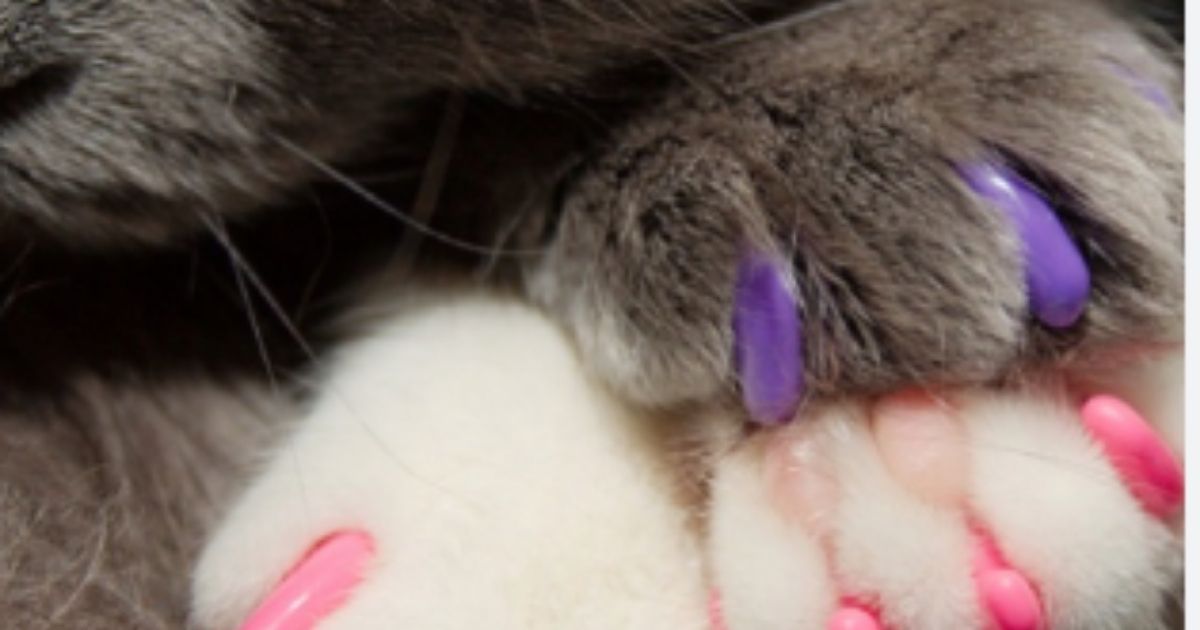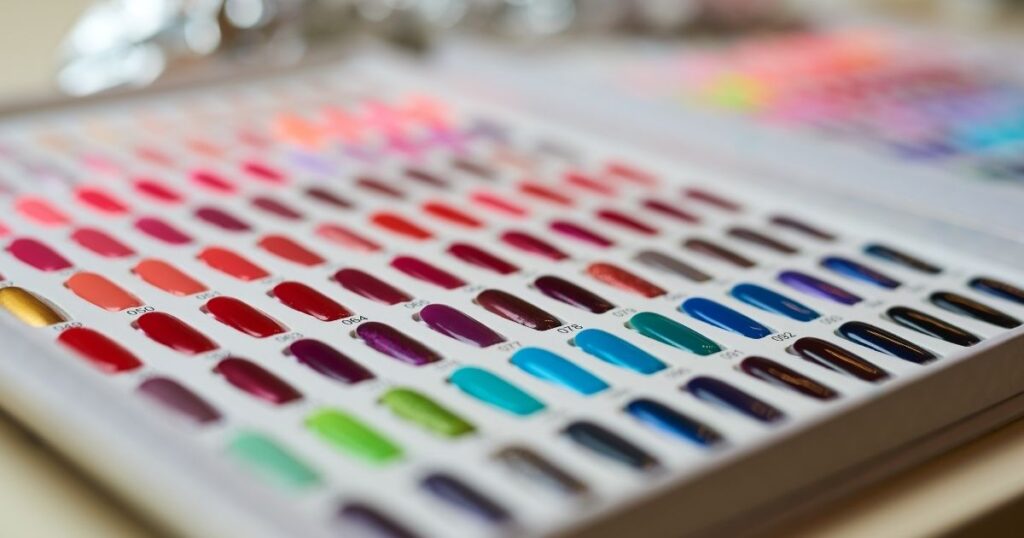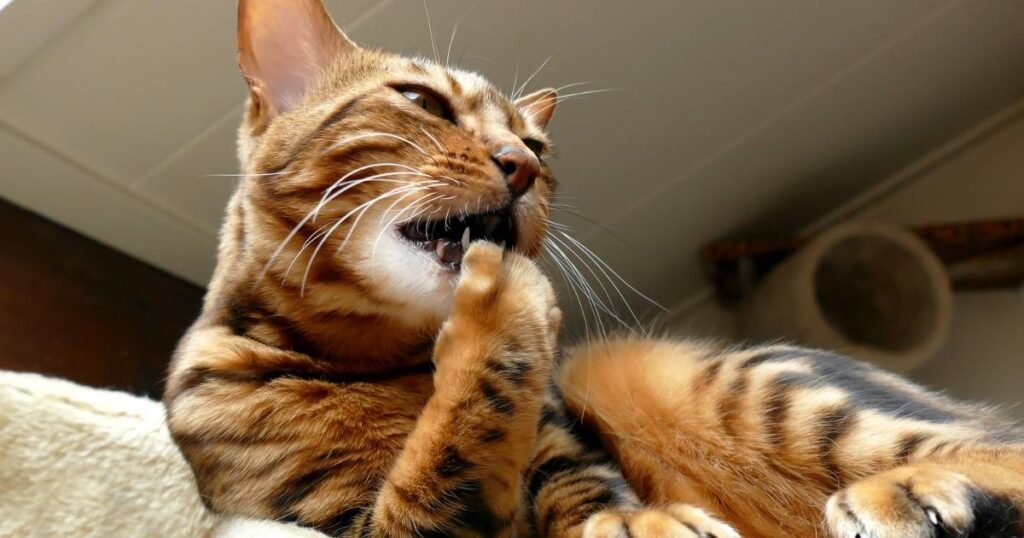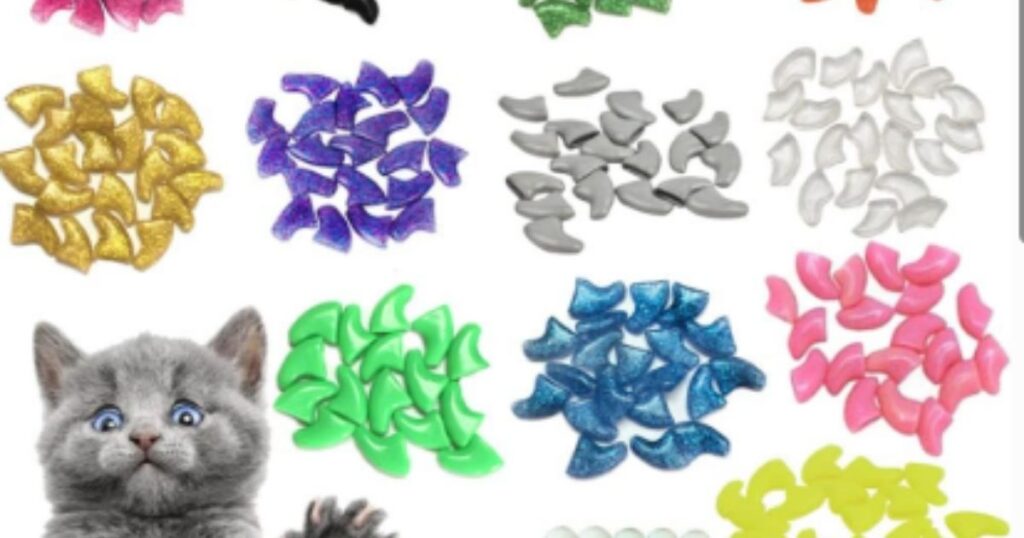Now Reading: Cat Nail Caps: Are They the Purrfect Fix or a Scratchy Mistake?
- 01
Cat Nail Caps: Are They the Purrfect Fix or a Scratchy Mistake?

Cat Nail Caps: Are They the Purrfect Fix or a Scratchy Mistake?
Let’s be honest — your cat might be adorable, but your furniture? It’s under attack. One minute you’re sipping coffee, and the next, your couch looks like it fought a wild jungle beast. Sound familiar? You’re not alone. Thousands of cat parents across the U.S. are exploring cat nail caps as a solution — but are they safe? Do they work? How do you even put them on?

Today, we’re curling up with a cup of coffee (or catnip tea, if you prefer), and diving into everything you need to know about cat nail caps — from pros and cons to how to apply them like a pro.
What Are Cat Nail Caps?
Cat nail caps are small, soft covers made of vinyl or silicone that are glued onto your cat’s claws. Their goal? To prevent destructive scratching without causing harm. Think of them as little shoes for your cat’s paws — functional and even stylish (yes, they come in colors).
Why Use Nail Caps for Cats?
Whether your cat is a hyperactive kitten or a queen of the house, scratching is part of her DNA. It’s how she marks territory, stretches muscles, and keeps her claws sharp. But when the scratching targets your leather couch or antique rug, it’s time for a solution.
Here’s where nail caps for cats come in:
- Furniture Savior – Say goodbye to shredded drapes.
- Safe Playtime – Protects you, your kids, and other pets from painful scratches.
- Alternative to Declawing – A humane option that avoids permanent harm.
A Must Read: When Does Kitten Eye Color Change? Timeline, Truth & Surprises
Are Cat Nail Caps Safe?

This is the big question — and a fair one.
The good news? Cat nail caps are safe when used correctly. They don’t hurt the cat, and your furball can still extend and retract their claws naturally. In fact, veterinarians often recommend them over harmful practices like declawing.
That said, there are some things to consider:
- Fit Matters – The wrong size can irritate your cat’s paws.
- Glue Use – Always use vet-approved, pet-safe adhesive.
- Supervision – Watch for signs of discomfort or biting at the caps.
So, are cat nail caps safe? Yes — with proper application and monitoring.
How to Put Nail Caps on a Cat: A Step-by-Step Guide
Alright, this part requires a bit of patience (and maybe some treats). Here’s how to apply cat toenail covers like a pro:

- Trim the Claws – Start by clipping your cat’s nails to the right length.
- Pick the Right Size – Most kits come in small, medium, and large.
- Fill the Cap – Use a drop or two of the adhesive (less is more!).
- Slide It On – Gently place the cap over the claw and hold for 5 seconds.
- Distract & Reward – Give your kitty some treats or playtime to ease the experience.
Repeat for all claws — or just the front ones, depending on your goal.
Cat Claw Covers: Pros and Cons
Still unsure? Here’s a quick breakdown to help you decide if cat claw covers are right for you:
Pros:
- Non-toxic and pet-safe
- Last 4–6 weeks
- Affordable and accessible
- Stylish and customizable
Cons:
- Takes time to apply
- May fall off prematurely
- Not ideal for outdoor cats
Fun Reading Treat: Boy or Girl? Cute Bunny Names That’ll Work!
Real Talk: Do They Work?
Short answer? Yes — for most cats. But every feline is different. Some adapt quickly, while others might try to chew them off. The key is starting slowly, rewarding cooperation, and monitoring for any signs of distress.
If your cat absolutely refuses them, that’s okay. Other scratch-control methods like scratching posts, deterrent sprays, and frequent nail trims might be a better fit.
Bonus Tip: Use Them Alongside Good Habits
Cat nail caps aren’t a one-size-fits-all miracle. For best results:
- Place scratching posts in multiple rooms.
- Redirect scratching behavior early.
- Keep playtime exciting and structured.
Final Thoughts

Cat nail caps are a safe, humane, and effective way to protect your furniture — and your skin — from kitty claws. They’re especially helpful for indoor cats and pet parents who want a declawing alternative.
Remember: patience is key, treats are gold, and a calm environment makes all the difference.
So, is it time to give cat nail caps a try? Your couch sure hopes so!
You May Also Like To Read: How to Trim Cat Nails Without Getting Scratched
FAQs
No. When applied properly, most cats adjust within a day or two. Start with a few nails and gradually increase if your cat resists.
Typically 4–6 weeks, depending on how fast your cat’s claws grow.
Yes, though most people apply them only to the front claws.
Simply replace it. It’s normal for one or two caps to shed before the others.
They stop damage from scratching but don’t eliminate the behavior. Always offer scratch alternatives too.
Yes! Just follow the kit instructions, take your time, and keep it calm and positive.













